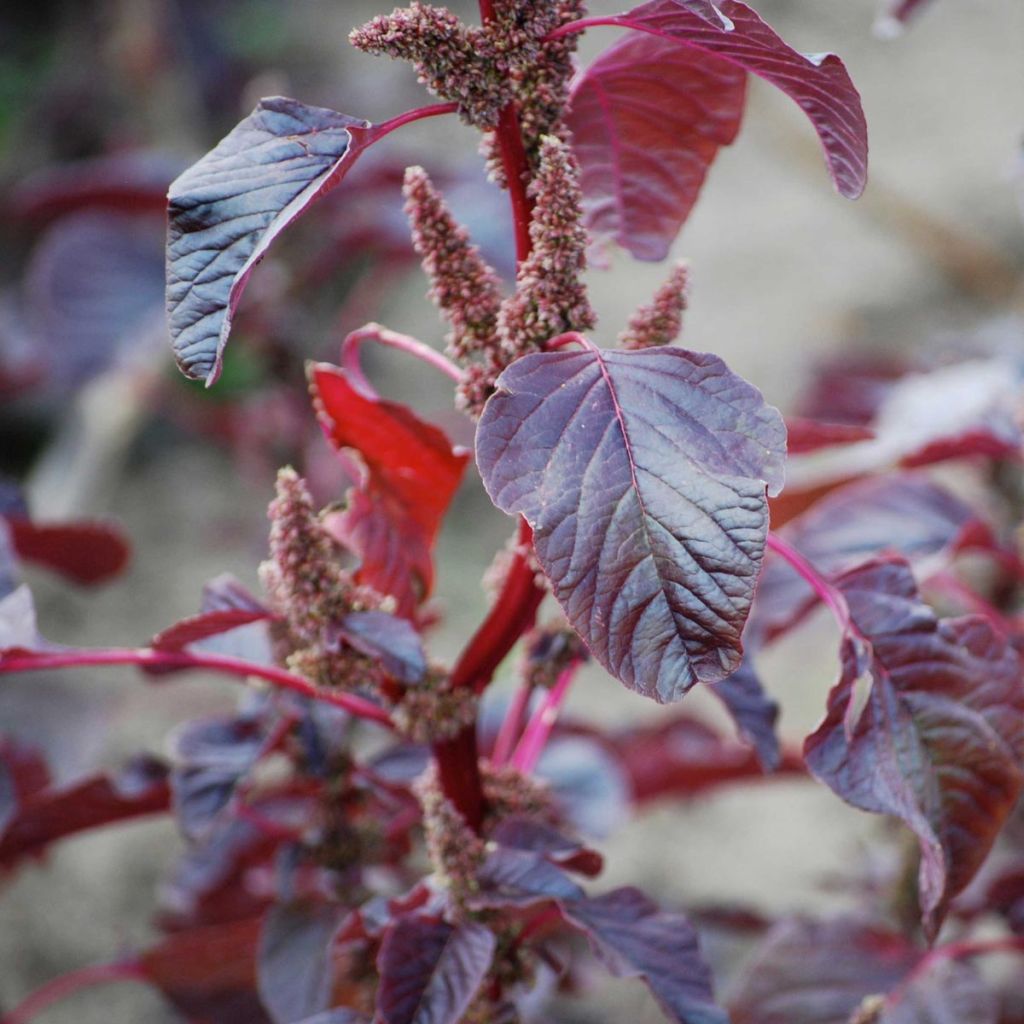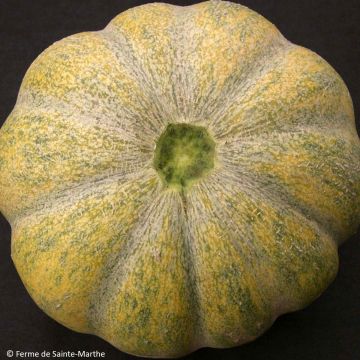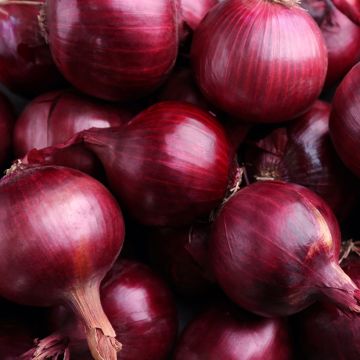

Red Orach - Ferme de Sainte Marthe seeds


Red Orach - Ferme de Sainte Marthe seeds
Red Orach - Ferme de Sainte Marthe seeds
Atriplex hortensis Rouge
Mountain spinach, Arroche, French spinach, Giant Lambsquarters
Planted in April, in potting soil under greenhouse, the seeds haven't produced anything yet.
Chenapouille, 02/05/2022
Special offer!
Receive a €20 voucher for any order over €90 (excluding delivery costs, credit notes, and plastic-free options)!
1- Add your favorite plants to your cart.
2- Once you have reached €90, confirm your order (you can even choose the delivery date!).
3- As soon as your order is shipped, you will receive an email containing your voucher code, valid for 3 months (90 days).
Your voucher is unique and can only be used once, for any order with a minimum value of €20, excluding delivery costs.
Can be combined with other current offers, non-divisible and non-refundable.
Home or relay delivery (depending on size and destination)
Schedule delivery date,
and select date in basket
This plant carries a 6 months recovery warranty
More information
We guarantee the quality of our plants for a full growing cycle, and will replace at our expense any plant that fails to recover under normal climatic and planting conditions.
Description
Red Orach is an annual herbaceous plant, similar to Spinach, grown for its magnificent red leaves. An easy-to-grow vegetable that grows to an amazing height of almost 2 m. Sow from March to July and harvest from July to September.
Orach, Atriplex hortensis in Latin, belongs to the Chenopodoaceae family. It is native to Central Asia and Siberia. This leaf vegetable was commonly grown in the Middle Ages before it was supplanted by spinach. It is a spectacularly fast-growing annual. It has an upright habit, measuring from 1 to 2.5 m in height. Its fluted stem carries large alternate leaves which vary in colour depending on the variety.
Orach leaves can be eaten raw in salads or cooked like spinach in a stew, gratin, pie etc. They go very well with sorrel. Orach is low in calories but high in fibre, vitamin C and minerals. Given its high oxalic acid content, it should nevertheless be consumed in moderation by people prone to kidney stones.
Orach is easy to grow. It does well in rather poor soil in the half-shade. Its only failing is its tendency to bolt during dry spells. Stagger your sowing to bypass this problem.
Harvesting: the first young leaves will be ready to harvest about 4 months after sowing.
Preservation: Orach does not keep very well in the refrigerator as it tends to wilt. It is best to eat it a few hours after harvesting. However, blanched leaves (boiled in salted water for 3 minutes) can be frozen for later use.
Useful tip: In order to limit weeding, mulch the soil with thin layers of grass clippings, if possible mixed with dead leaves. This will keep the soil moist and the watering down to a minimum.
NB. Organic seeds (in French "AB" for "Agriculture Biologique") are produced from plants that aren't treated with phytosanitary products (insecticides, weed killers). The seeds do not undergo post-harvest treatment. They carry the AB label and are approved by Ecocert, an independent structure.
Red Orach - Ferme de Sainte Marthe seeds in pictures


Harvest
Plant habit
Foliage
Botanical data
Atriplex
hortensis
Rouge
Chenopodiaceae
Mountain spinach, Arroche, French spinach, Giant Lambsquarters
Cultivar or hybrid
Annual
Other Vegetable seeds from A to Z
View all →Planting and care
Sowing:
Orach germinates at a temperature of about 15 to 20°C. Germination generally takes between 6 and 10 days.
Sow the seeds from March to July in their final position at a depth of 1 to 2 cm. Place groups of 3 seeds in small holes, spaced 40 to 50 cm apart.
When the seedlings have 3-4 leaves, thin them out leaving only the strongest seedling in place.
Where to grow:
Orach is an easy, fast-growing vegetable. It does well in rather poor soil in the half-shade. Its only failing is its tendency to bolt during dry spells. Stagger your sowing to bypass this problem.
Seedlings
Care
Intended location
Planting & care advice
-
, onOrder confirmed
Reply from on Promesse de fleurs
Similar products
Haven't found what you were looking for?
Hardiness is the lowest winter temperature a plant can endure without suffering serious damage or even dying. However, hardiness is affected by location (a sheltered area, such as a patio), protection (winter cover) and soil type (hardiness is improved by well-drained soil).

Photo Sharing Terms & Conditions
In order to encourage gardeners to interact and share their experiences, Promesse de fleurs offers various media enabling content to be uploaded onto its Site - in particular via the ‘Photo sharing’ module.
The User agrees to refrain from:
- Posting any content that is illegal, prejudicial, insulting, racist, inciteful to hatred, revisionist, contrary to public decency, that infringes on privacy or on the privacy rights of third parties, in particular the publicity rights of persons and goods, intellectual property rights, or the right to privacy.
- Submitting content on behalf of a third party;
- Impersonate the identity of a third party and/or publish any personal information about a third party;
In general, the User undertakes to refrain from any unethical behaviour.
All Content (in particular text, comments, files, images, photos, videos, creative works, etc.), which may be subject to property or intellectual property rights, image or other private rights, shall remain the property of the User, subject to the limited rights granted by the terms of the licence granted by Promesse de fleurs as stated below. Users are at liberty to publish or not to publish such Content on the Site, notably via the ‘Photo Sharing’ facility, and accept that this Content shall be made public and freely accessible, notably on the Internet.
Users further acknowledge, undertake to have ,and guarantee that they hold all necessary rights and permissions to publish such material on the Site, in particular with regard to the legislation in force pertaining to any privacy, property, intellectual property, image, or contractual rights, or rights of any other nature. By publishing such Content on the Site, Users acknowledge accepting full liability as publishers of the Content within the meaning of the law, and grant Promesse de fleurs, free of charge, an inclusive, worldwide licence for the said Content for the entire duration of its publication, including all reproduction, representation, up/downloading, displaying, performing, transmission, and storage rights.
Users also grant permission for their name to be linked to the Content and accept that this link may not always be made available.
By engaging in posting material, Users consent to their Content becoming automatically accessible on the Internet, in particular on other sites and/or blogs and/or web pages of the Promesse de fleurs site, including in particular social pages and the Promesse de fleurs catalogue.
Users may secure the removal of entrusted content free of charge by issuing a simple request via our contact form.
The flowering period indicated on our website applies to countries and regions located in USDA zone 8 (France, the United Kingdom, Ireland, the Netherlands, etc.)
It will vary according to where you live:
- In zones 9 to 10 (Italy, Spain, Greece, etc.), flowering will occur about 2 to 4 weeks earlier.
- In zones 6 to 7 (Germany, Poland, Slovenia, and lower mountainous regions), flowering will be delayed by 2 to 3 weeks.
- In zone 5 (Central Europe, Scandinavia), blooming will be delayed by 3 to 5 weeks.
In temperate climates, pruning of spring-flowering shrubs (forsythia, spireas, etc.) should be done just after flowering.
Pruning of summer-flowering shrubs (Indian Lilac, Perovskia, etc.) can be done in winter or spring.
In cold regions as well as with frost-sensitive plants, avoid pruning too early when severe frosts may still occur.
The planting period indicated on our website applies to countries and regions located in USDA zone 8 (France, United Kingdom, Ireland, Netherlands).
It will vary according to where you live:
- In Mediterranean zones (Marseille, Madrid, Milan, etc.), autumn and winter are the best planting periods.
- In continental zones (Strasbourg, Munich, Vienna, etc.), delay planting by 2 to 3 weeks in spring and bring it forward by 2 to 4 weeks in autumn.
- In mountainous regions (the Alps, Pyrenees, Carpathians, etc.), it is best to plant in late spring (May-June) or late summer (August-September).
The harvesting period indicated on our website applies to countries and regions in USDA zone 8 (France, England, Ireland, the Netherlands).
In colder areas (Scandinavia, Poland, Austria...) fruit and vegetable harvests are likely to be delayed by 3-4 weeks.
In warmer areas (Italy, Spain, Greece, etc.), harvesting will probably take place earlier, depending on weather conditions.
The sowing periods indicated on our website apply to countries and regions within USDA Zone 8 (France, UK, Ireland, Netherlands).
In colder areas (Scandinavia, Poland, Austria...), delay any outdoor sowing by 3-4 weeks, or sow under glass.
In warmer climes (Italy, Spain, Greece, etc.), bring outdoor sowing forward by a few weeks.


























































